Last week I gave a talk at MathsJam Annual Gathering. This is an amazing annual event where ‘mathematicians’ from around the world get together. It isn’t the boring number stuff you might imagine. When 200 eccentrics (of the nicest possible kind) get together it leads to mind-bending fun, puzzles, games, performances, cake baking, singing and many other things that would soon dispel the idea of maths being boring.
Each speaker is only allowed a five-minute slot (with plenty of discussion time afterwards). I originally intended to talk about mathematical Barbie clothes, which you can find in other posts on this blog. At the last minute I changed my mind and decided to talk instead about the most basic ideas behind Woolly Thoughts mathematical knitting.
We have been presenting workshops for 25 years and work on the premise that a good many participants will say ‘I can’t do maths’. We aim to convince them that they can. The methods shown here are a ‘foot in the door’ to those people and we know, from experience, that some wonderful things can follow.
What happens at a workshop
Knitters are asked to bring their own choice of needles and yarn, to prove that the methods work with anything. The same thickness of yarn should be used throughout.
They are given a square with a diagonal line marked on it.
The instructions are
- Work in garter stitch (Knit every row)
- Start with a slip-knot
- Knit into the front and back of the loop
- On every row, knit into the front and back of the last stitch until you have a triangle wide enough to fit up to the diagonal line
- Make a note of the number of stitches
- On every row, knit to the last two stitches. Knit two together
- Fasten off when one stitch remains
It may not be a perfect square but will become square when other shapes are added to it.
The next part involves some elaborate work with a very large calculator where we take each person’s remembered number of stitches, divide it by 1.4 and round to the nearest whole number. We haven’t mentioned maths yet. Calculators aren’t real maths.
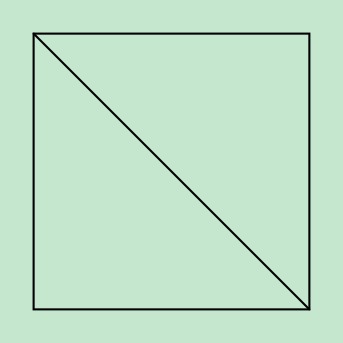
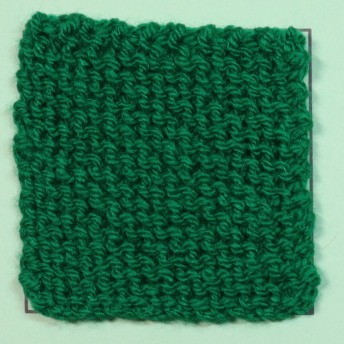
The next stage is to pick up this number of stitches along one edge of the square.
This must be with the same needles and the same thickness yarn but can be a different colour. The new triangle is made in exactly the same way as the second half of the square.
It is guaranteed that at this point someone will say ‘I’ve made a house’ … and people will put them together and say ‘We’ve made a row of houses’. All the houses are the same size with different numbers of stitches.
We still haven’t mentioned maths.
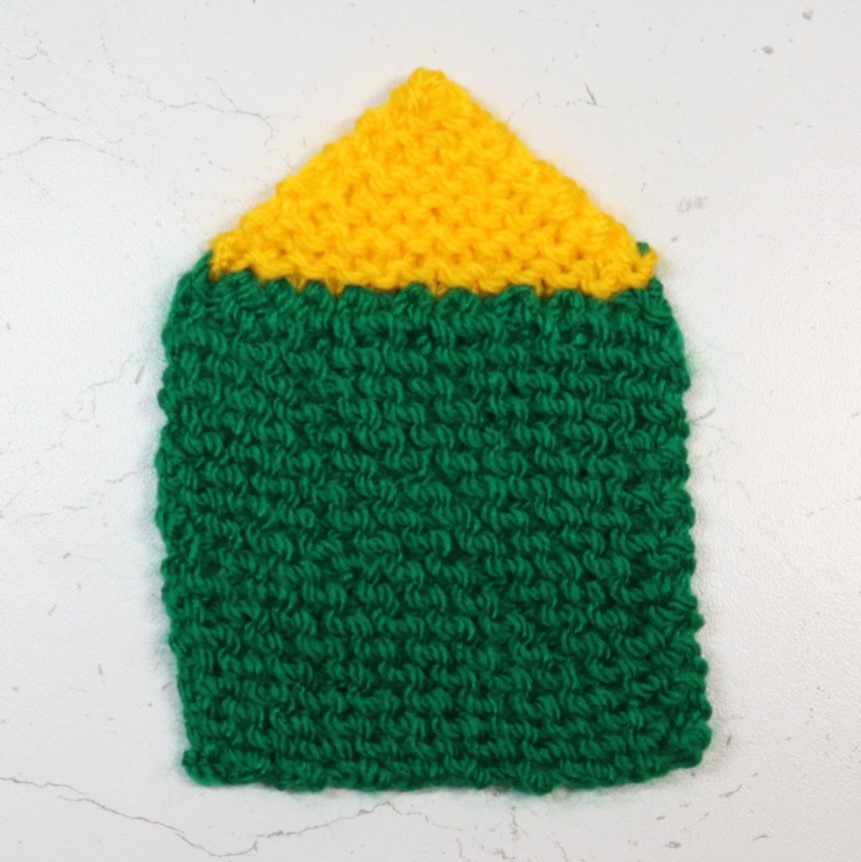
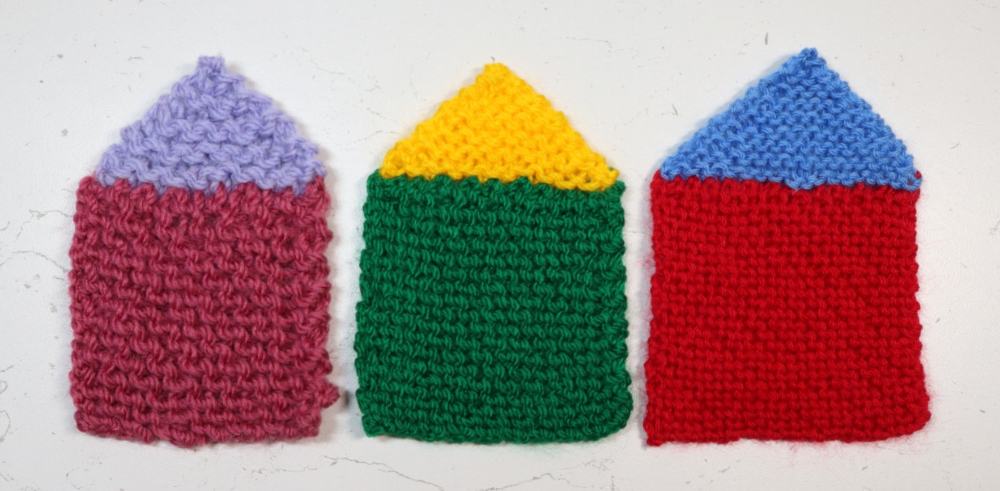
Use the number of stitches picked up before and divide by 1.4 to make the small triangles. The sharp-eyed might notice that this is half the number of stitches on the diagonal of the square so now we could start dropping in some maths.
- Squares, triangles, rectangles
- Mathematically there is no such thing as a diamond
- Triangular numbers
- Consecutive triangular numbers to make a square number
- Halving and doubling
- Area
- and, maybe, Pythagoras Theorem
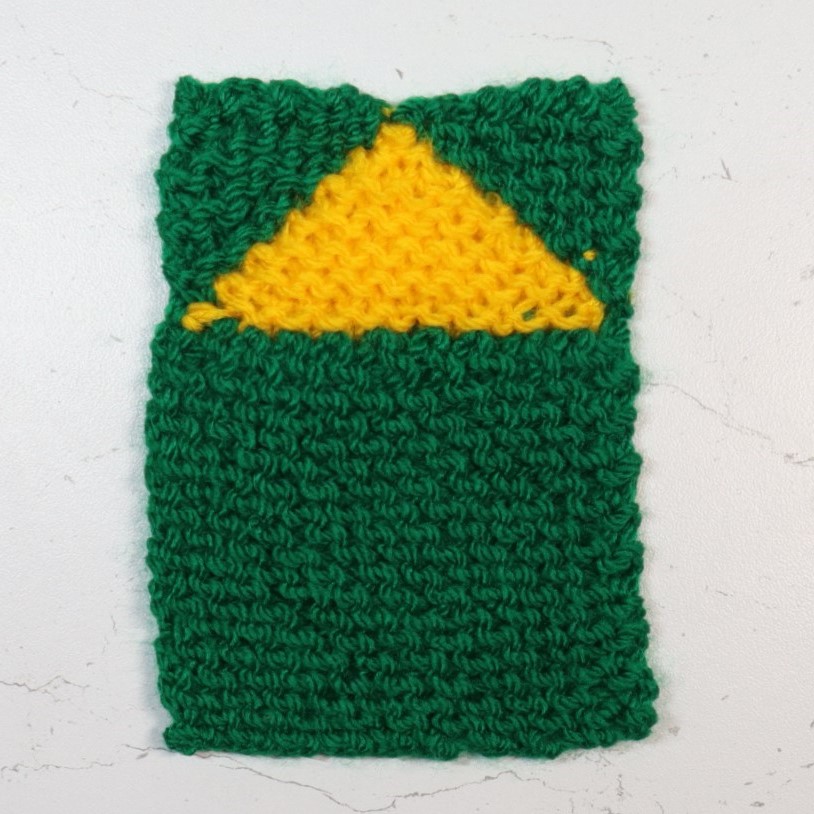
Why does it work?
Garter stitch forms square stitches. Two rows are the same height as the width of one stitch. This property means it makes right-angled triangles so normal geometry can be used.
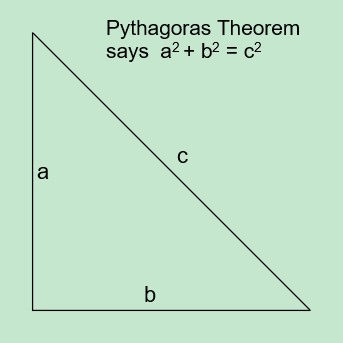
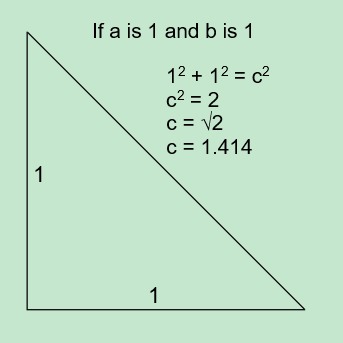
The square root of two is really 1.4142… Knitting stretches so the geometry doesn’t need to be quite as accurate as in normal maths. It is near enough to say that the diagonal of the square is 1.4 times the length of the side of the square.
Some knitters don’t care how it works and are happy to just believe that dividing the stitches on the diagonal by 1.4 will give the right answer. Whether they care or not they can still go on to use the basic concept in many different ways.
The ‘houses’ can be arranged in various ways to make patterns. This could be an introduction to tessellations and looking at different shapes. What shape are the houses? What shapes can you see in the arrangements below? What do you notice about the squares? etc.


More shapes can be added, in any direction. The arrangement below is particularly useful. The four yellow corners can be folded in to cover the green square. This makes it very obvious that the yellow area is the same size as the green area. The overall shape is twice the size of the original.
This can be very helpful to knitters. The four yellow triangles will need exactly the same amount of yarn as was used for the green square.
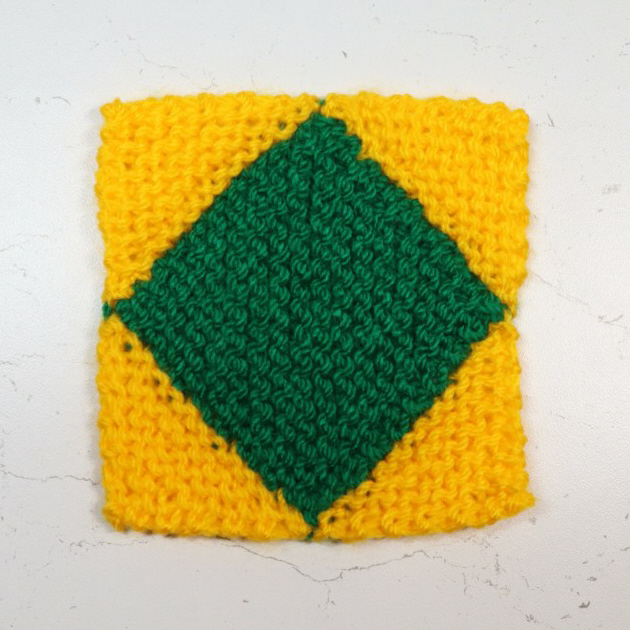
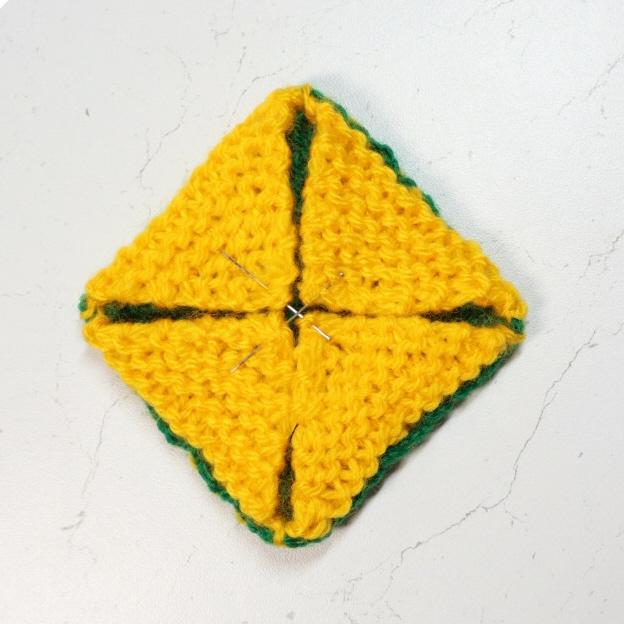
Using these methods it is possible to go on and add shapes in any direction. The angles of the shapes will always be 45, 90 or 135 degrees. The number of stitches needed can be found by doubling and halving. Stitches in the same direction as those on the diagonal of the square will always be a multiple, or fraction of those stitches. Stitches parallel to the sides of the square will be a multiple, or fraction of the number of stitches on the side of the square.
To be continued …
Continued in More Modular Knitting and Modular Knitting 3